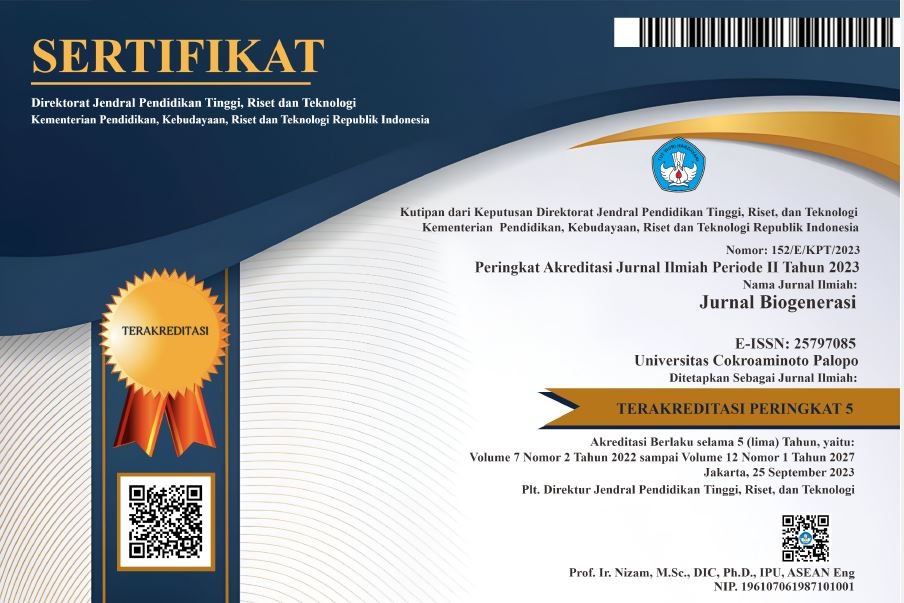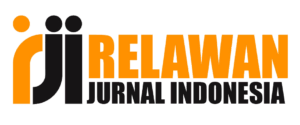Kajian Etnobotani Borassus flabellifer Bahan Baku Songkok Recca Ciri Khas Masyarakat Bugis Bone
DOI:
https://doi.org/10.30605/biogenerasi.v10i2.6881Keywords:
Borassus flabellifer, Ethnobotany, Songkok ReccaAbstract
Borassus flabellifer, commonly known as the lontar palm, is a member of the Arecaceae family that thrives in arid regions and serves as the primary raw material in the production of songkok recca, a traditional handwoven cap. The local community in Pacing Village, Awangpone Subdistrict, Bone Regency, possesses indigenous ethnobotanical knowledge related to the utilization and management of this plant, particularly in the crafting of songkok recca. This study aims to examine the ethnobotanical role of Borassus flabellifer in the traditional songkok recca production process and to explore sustainable practices for its continued use from both ecological and cultural perspectives. Employing a descriptive-exploratory research design, data collection was conducted through surveys and semi-structured interviews using the Participatory Ethnobotany Appraisal (PEA) method. The data were analyzed using qualitative and quantitative descriptive techniques. Findings indicate that Borassus flabellifer holds significant cultural and economic value within the local community. The preparation of raw materials involves harvesting the leaf sheaths, followed by a sequence of traditional processing steps—pounding (cacca-racca), burning, peeling, soaking, and fine-shaving using a traditional tool called paddari—to produce thin, smooth fibers known as racca, which are then used in weaving songkok recca.
Downloads
References
Anugra, N. (2023). Kajian Etnobiologi Reu Balacung: Perban Alami Masyarakat Enrekang sebagai Sumber Pembelajaran IPA . IAIN Parepare Nusantara Press, 20–38.
Baihaqi, L., Kristinawati Putri, F. (2022). Pemanfaatan Tradisional dan Pengetahuan Lokal Tanaman Lontar (Borassus flabellifer L.) oleh Masyarakat Pamekasan Madura Traditional Uses and Local Knowledge of Lontar (Borassus flabellifer L.) in Pamekasan, Madura. Lentera Bio Berkala Ilmiah Biologi, 11(1),208–216. https://journal.unesa.ac.id/index.php/lenterabio/index208
Farid Ariandi, M., & Jufri, M. (2022). Eksistensi Songkok Recca dalam Peradaban Masyarakat Bone. 45 | CARITA : Jurnal Sejarah dan Budaya Eksistensi Songkok Recca dalam Peradaban Masyarakat Bone.
Gede, I., Sudipa, I., & Rahman, A. (2024). Buku Ajar Metodologi Penelitian. https://www.researchgate.net/publication/377223521
Jumadi, Nurlela, Asmunandar, Khaeruddin, Tat, A. De. R., & Bahri. (2023). Songkok Recca To Bone; Identitas Lokal Yang Menasional. Prosiding Seminar Nasional. https://journal.unm.ac.id/index.php/Semnasdies62/index
SALINAN MENTERI PENDIDIKAN DAN KEBUDAYAAN. (2018). PENETAPAN WARISAN BUDAYA TAKBENDA INDONESIA.
Sari, K., Rafdinal, Masnur, T. (2022). Etnobotani Tumbuhan Pangan Suku Dayak Desa Kaliau’ Sajingan Besar Kabupaten Sambas (Ethnobotany of Food Plants Dayak Tribe Kaliau’ Sajingan Besar Village, Sambas Regency). Journal of Biotechnology and Conservation in WALLACEA,02,79–88. https://doi.org/10.35799/jbcw.v2i2.43320
Tambunan, P. (2010). Potensi Dan Kebijakan Pengembangan Lontar Untuk Menambah Pendapatan Penduduk (The Potential and Policy for Lontar Development to Increase the People Income). www.detikfinance.com
Yusaerah, N. (2023). Potensi Pigmen Pewarna Alami Pada Corak Songkok Recca Sebagai Sumber Pembelajaran Ipa. IAIN Parepare Nusantara Press, 89–108.
Downloads
Published
Versions
- 2025-09-03 (4)
- 2025-09-02 (3)
How to Cite
Issue
Section
License
Copyright (c) 2025 Nurlaeliana, Satriani, Tauhidah Bachtiar, Anita H, Mutmainna Ekawati

This work is licensed under a Creative Commons Attribution 4.0 International License.
In submitting the manuscript to the journal, the authors certify that:
- They are authorized by their co-authors to enter into these arrangements.
- The work described has not been formally published before, except in the form of an abstract or as part of a published lecture, review, thesis, or overlay journal.
- That it is not under consideration for publication elsewhere,
- That its publication has been approved by all the author(s) and by the responsible authorities – tacitly or explicitly – of the institutes where the work has been carried out.
- They secure the right to reproduce any material that has already been published or copyrighted elsewhere.
- They agree to the following license and copyright agreement.
License and Copyright Agreement
Authors who publish with this journal agree to the following terms:
- Authors retain copyright and grant the journal right of first publication with the work simultaneously licensed under Creative Commons Attribution License (CC BY 4.0) that allows others to share the work with an acknowledgment of the work's authorship and initial publication in this journal.
- Authors are able to enter into separate, additional contractual arrangements for the non-exclusive distribution of the journal's published version of the work (e.g., post it to an institutional repository or publish it in a book), with an acknowledgment of its initial publication in this journal.
- Authors are permitted and encouraged to post their work online (e.g., in institutional repositories or on their website) prior to and during the submission process, as it can lead to productive exchanges, as well as earlier and greater citation of published work.


.png)

